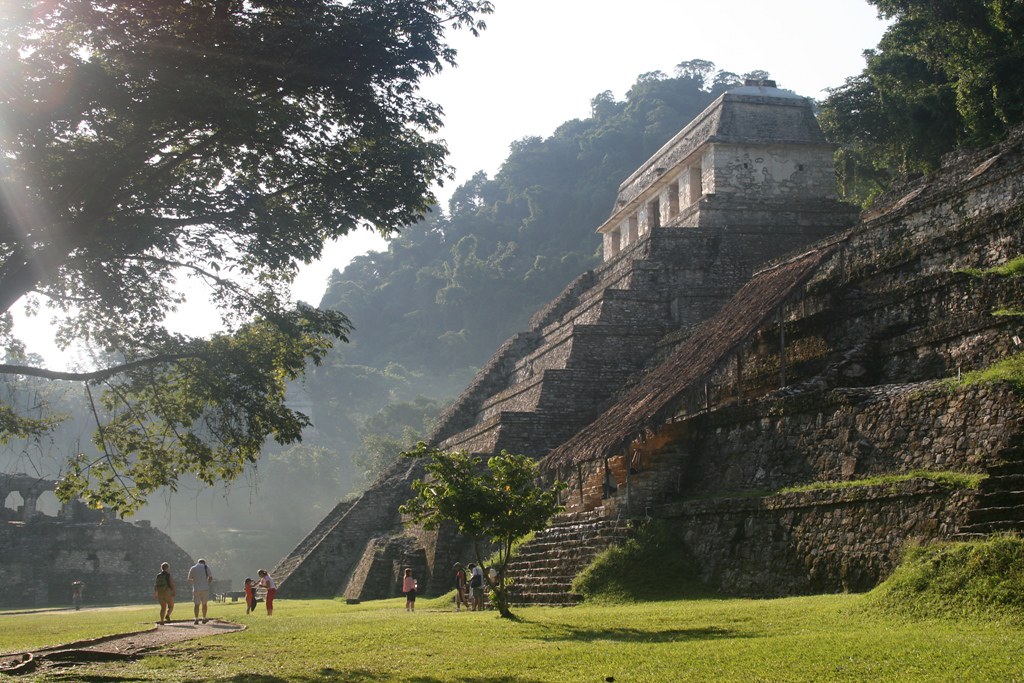Mayans, Aztecs, Incas… it’s true that we often get confused about where, when and how these civilizations developed their cultures. What we do know is that they were all incredible builders who constructed monumental pyramids, often at the heart of cities, that we can still see today.
So let’s embark on a journey to three truly remarkable pre-Columbian pyramids located in Mexico.
Chichén Itzá: The Most Famous
This is visually the best-known pre-Columbian site in Central America, featuring its famous impeccably preserved pyramid. Chichén Itzá, this ancient Mayan city located in Mexico’s Yucatan Peninsula, is indeed considered one of the jewels of world heritage and was inscribed as a UNESCO World Heritage Site in 1988.
While we don’t know exactly when this city was built, scholars agree it predates the 10th century. This century would actually represent the height of Chichén Itzá’s power, when the city was one of the most important religious centers in the Yucatan and served as the capital of a vast region.
El Castillo or the Pyramid of Kukulcán
This stepped pyramid is Chichén Itzá’s most iconic and photogenic structure. Standing 98 feet (30 meters) tall with a width of 182 feet (55.50 meters), its construction spanned several centuries, blending Toltec and Mayan styles. It’s dedicated to the Feathered Serpent, as evidenced by its design incorporating remarkable astronomical elements, such as the shadow of the main staircase simulating the Feathered Serpent Kukulcán during the spring and autumn equinoxes. Quite an achievement for its time…
Teotihuacan: The Largest
In the heart of the Valley of Mexico, close to the capital, the immense site of Teotihuacan is classified as a UNESCO World Heritage Site and remains a “must-see” for any visit to this part of Mexico.
What was once a city of 200,000 inhabitants at its peak is truly remarkable. Not least for its imposing central avenue called by the Aztecs (who took over the site without having built it) the “Avenue of the Dead,” which, lined with temples and palaces, connected the city’s main monuments. Among these were the largest pyramids ever built in pre-Columbian times.
The Pyramid of the Sun and the Pyramid of the Moon
The Pyramid of the Sun is Teotihuacan’s largest structure. Bordering the central avenue, it measures approximately 213 feet (65 meters) in height and requires climbing 265 steps to reach its summit. According to archaeologists, it was initially dedicated to Tlaloc, the rain god, despite its name.
As for the Pyramid of the Moon, it stands at the northern end of the Avenue of the Dead. At 151 feet (46 meters) tall, it was built in several phases, unlike its neighbor, the Sun pyramid.
Palenque: Temples in the Jungle
In many people’s opinion, Palenque remains one of Mexico’s most beautiful Mayan testimonies, also inscribed on UNESCO’s list.
Hidden in the jungle of Chiapas, in the south of the country, its palaces, pyramids, stelae and other remains are indeed among the most impressive you can see. Especially since the place has a somewhat timeless, even mysterious atmosphere, even though the site isn’t among the largest.
The Temple of Inscriptions
Among all the buildings, the Temple of Inscriptions remains the largest pyramidal structure. Built as a funerary monument for Pakal the Great, one of the city’s rulers in the 7th century, it presents itself as a nine-step pyramid about 66 feet (20 meters) high topped by the temple itself.
Its name comes from the three large panels of hieroglyphs that adorn the temple’s interior walls. These very panels describe the genealogy and history of this king, as well as Mayan mythology.

